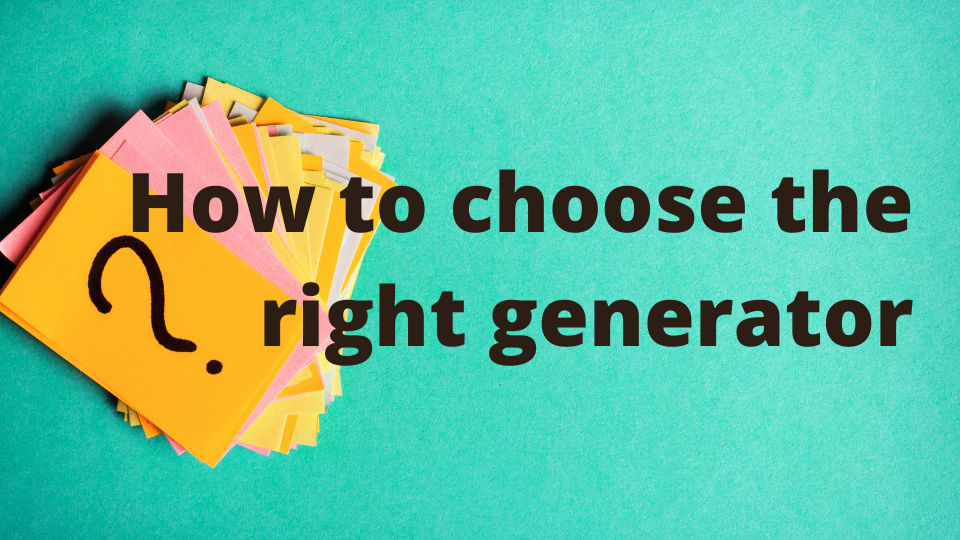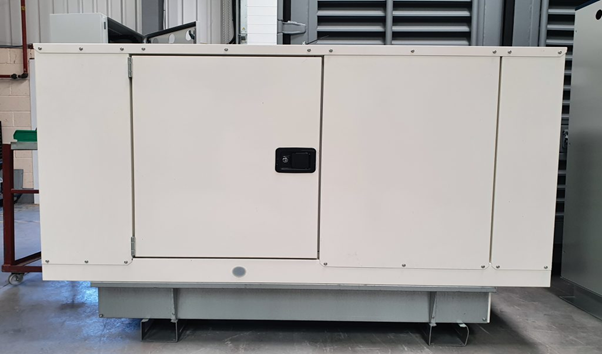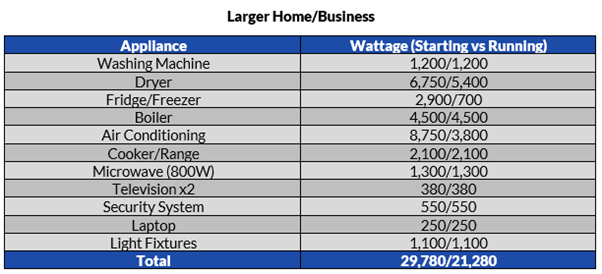
If you live off-grid, or you’re considering options for your business premises, you must find the correctly sized generator to ensure that you’re not sitting in the dark with no heating.
This is particularly important when you’re running a business since unwanted downtime is not only impacting your employee’s ability to work, but also impacting your bottom line too.
In this blog, we’ll be exploring how to select the right generator for your requirements.

What Sizes Do Generators Come In?
To fully determine what size generator, you require to ensure your entire property is always offering the power you require, you need to start by finding out the answers to two key points:
- What is the starting wattage, or surge wattage, of the appliances and equipment that you wish to power?
- Find a generate with enough power output to exceed the combined wattage of all the appliances and equipment that require power within the property.
When we refer to the size of a generator, we’re not simply talking about the physical size of the generator, but rather the size of the electrical output. These are measured in kilowatts (kW) or watts (W), both of which are a way of measuring electricity.
But why is it so important to ensure that you’re selecting the right generator?
- If your unit is too big, you’ll be paying more for the physical unit and the associated costs of running it.
- If it is too small, you’ll be faced with the prospect of overloading the generator, which means that you’re asking it to supply more power than it is capable of offering. When this happens, the generator will turn off or overheat, the latter of which means that you will damage your generator and your appliances.
How to Calculate Your Generator Requirements
To calculate what size generator, you need to keep your whole property ticking over, you need to follow these steps:
- Make a list of all the appliances you need to power.
- Determining the *starting and running wattage of everything on this list. If you’re unable to find the exact numbers of the appliance itself, you can use this wattage calculator here.
- Total the appliance wattage. Once you’ve done this you can use this figure to guide your decision as to which generator you need.
*Note that starting wattage, or surge wattage, describes the wattage an appliance needs to start. Usually starting wattage is two or three times higher than the ongoing running wattage.
Bear in mind though, a wattage estimate will only ever be just an estimate. If you’d prefer more of a concrete figure, you can also enlist the help of an electrician to help you come to a more rounded number.
However, below we’ve compiled a few tables of some common appliances and what power output you might expect them to use:

In this scenario, you’d need at least a 16kW generator, because the starting wattage of the appliances is 15,350W.

In the table above, you’d need a minimum size of at least 30kW. However, if this is a business premises, you’d need to consider the number of laptops and computers in use by your staff, so there’s a good chance you’d need a slightly bigger generator to cover the starting wattage.
If you’d like to like any more advice about your generator requirements, or you’d like to learn about any of our other products or solutions, then why not contact us today for more information?
Recent posts
- How Much Does an Off-Grid Power System Really Cost?
- Legacy Central Battery Systems: When to Upgrade Your Emergency Lighting Power
- Inside Powerguard: 25+ Years of British Engineering Power Systems
- Emergency Backup Power for Businesses: What Are Your Options?
- How To Get Reliable Power At My Wedding Venue